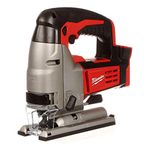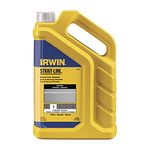IRC Footing Table Makes Sizing Deck Footings Easier
Size a concrete footing for solid support without digging more than you have to.
The 2018 IRC introduced Table R507.3.1 Minimum Footing Size for Decks and it makes sizing concrete footings for a deck simple.
The table has three main columns—one for Live or Ground Snow Load (whichever is larger) [pink], one for the Tributary Area of deck landing on each footing [red], and one column group different Load Bearing Value of Soil [blue]. The Load Bearing Value of Soil are further divided into four columns 1500 lbs, 2000 lbs, 2500 lbs, 3000 lbs

To determine the size of a footing:
- Select the Load Bearing Value of Soil column that matches the soil where the footings will be placed. You can visually grade the soil based on Table R401.4.1 or use a soil penetrometer (a device that measures the bearing capacity of soil) to determine the capacity.
- Locate the row group corresponding to the Live or Ground Snow Load for your deck. Except in high snow areas most decks are designed for 40 pounds per square foot (PSF) Live load – the first row group. You can find the ground snow load for your area in Table R301.2(1) Climatic and Geographic Design Criteria or Figure R301.2(6) Ground Snow Loads for the US which depicts all the US counties . Your local building department should also have the load requirement. 50, 60 and 70 PSF snow load groups are on the table. Some areas of the US have snow loads greater than 70 PSF; some exceeding 100 PSF. If you’re in one of these areas you will have to manually calculate the footing size.
- Locate the Tributary Area row for the footing. The tributary area is the portion of the deck surface area that bears its mass on top of an individual footing. See how to calculate it in the article “Complete Guide To Sizing Footings” . The table divides tributary areas in 20 square foot rows from 20 sq ft to 160 sq ft
- Then follow the Tributary Area row over to the column you determined for the Load Bearing of Soil.
There are three sub-columns for each Load Bearing of Soil column: Side of a square footing, Diameter of a round footing, Thickness. You can decide to make the footing square or round.
If the soil load bearing capacity falls between those listed on the table, you can interpolate the footing size from those listed. For example, if you determine the soil load value at 2250 PSF capacity and the tributary area is 100 sqft you can interpolate between the footing size for 2000 PSF soil (21 in. diameter) and 2500 PSF soil (19 in. diameter) and make the footing 20 in. diameter. Or just use the next lower soil bearing value column and size the footing a little larger than the table requires.
IG @mike_guertin
Fine Homebuilding Recommended Products
Fine Homebuilding receives a commission for items purchased through links on this site, including Amazon Associates and other affiliate advertising programs.

Jigsaw

Standard Marking Chalk

FastenMaster Screw Bolt Fastening System





